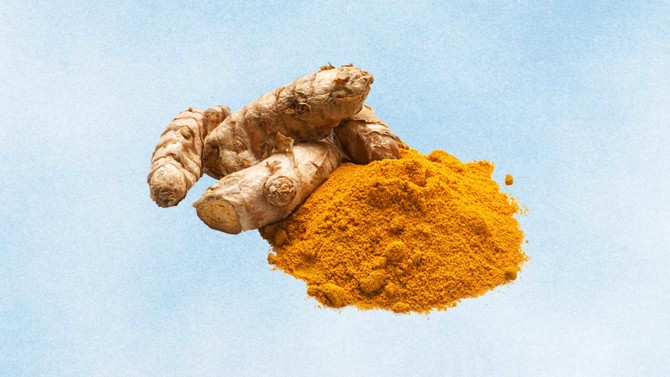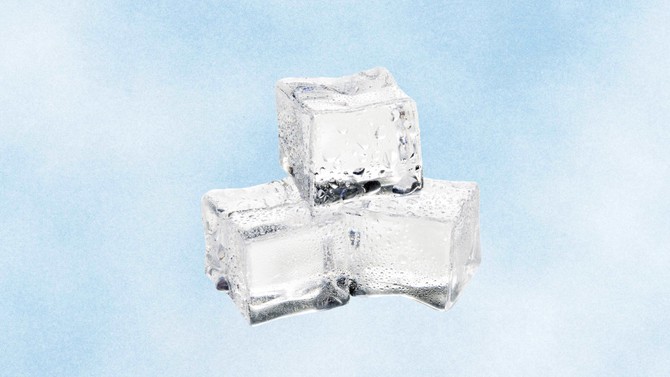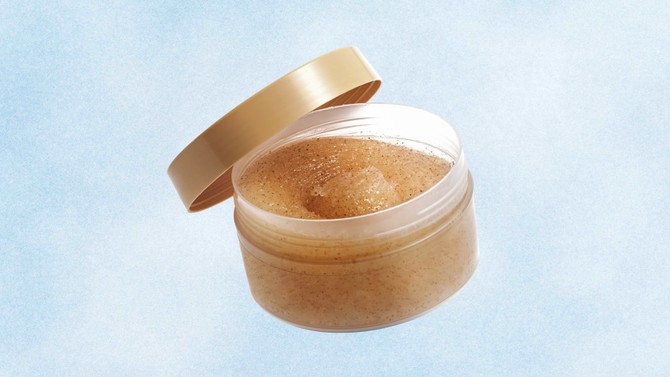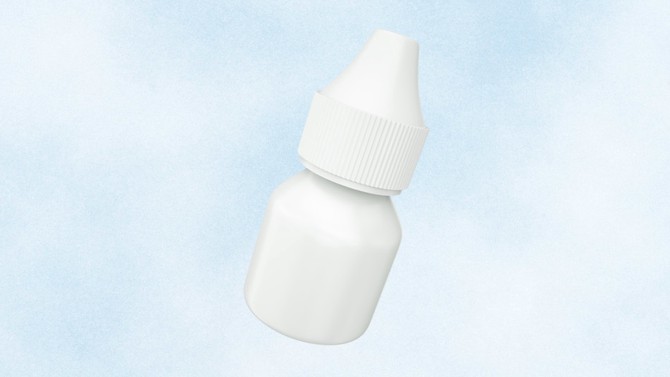16 Surprising Things Dermatologists Do to Their Skin
Their personal and unexpected tips for fighting blemishes, brightening dark spots, sealing in a youthful glow and more—plus, how champagne can help.
By Kari Molvar

Photo: burwellphotography/iStock
Rachel Nazarian, MD
She spices it up. Turmeric is a natural anti-inflammatory and antioxidant that's always in my spice cabinet. I will mix a teaspoon with two teaspoons of milk and apply a very thin layer to my skin for 10 minutes as a calming remedy. And to treat a blemish, I mix a teaspoon of turmeric with a dab each of hydrocortisone and Neosporin and put the mixture in the fridge for about an hour. After it's cold, I apply a small amount to a pimple with a dab of Vaseline on top to enhance penetration. The combo is anti-bacterial and causes blood vessels to constrict to minimize redness.
Fish oil is her cure-all. Natural fish oils are wonderful for your skin. I cut open omega-3 fish-oil capsules and apply a small amount of the oil to my cuticles, hands and heels to help hydrate and improve dry skin.
She never misses this premask step. Masking is a great opportunity to allow skin to have longer contact with ingredients that deeply cleanse and improve the quality of your skin. Partly because it's a pricey mask with such potent ingredients that I like to use weekly (La Prairie Swiss Cellular White Intensive Illuminating Mask), I try to do everything possible to enhance absorption. I apply the mask after I shower, so my skin is still damp, which is when its ingredients can penetrate most deeply, then place a warm (not hot) towel over my face and the mask. This keeps pores open and ensures the ingredients are being maximized and absorbed effectively.
Dr. Nazarian is a dermatologist at Schweiger Dermatology Group and an assistant clinical professor of dermatology at Mount Sinai Hospital in New York.

Photo: Bob Thomas/Getty Images
Debbie Palmer, DO
She jumps. I do 20 jumping jacks before putting on my makeup in the morning. Doing the jumping jacks gets circulation revved up, which circulates oxygen to every part of your body including your skin—giving your face a healthy flush. (I do this regularly throughout the day, when I'm able, to keep my skin glowing.)
She's big on bacteria. If you know you have a big event or meeting coming up and don't want to be surprised with a breakout, add probiotics (i.e., beneficial bacteria) to your diet at least two weeks (or even longer) before. Research has shown that acne can be a result of inflammation in the body, and that probiotics—found in yogurt, kefir and fermented foods like sauerkraut and kimchi, as well as in supplements—have anti-inflammatory qualities.
She keeps this cooking essential handy. I soak my hands in extra-virgin olive oil any chance I get. Being a doctor, I wash my hands a lot, which can dry out skin. Olive oil is a staple of the Mediterranean diet because it's chock-full of healthy fats and antioxidants. Olive oil is also an emollient, which means it helps to soften and smooth dry, rough skin and helps to prevent water loss from the skin—which is why it's the perfect treatment for dry hands (it works for dry feet, too!). After soaking, I carefully wipe off excess oil with a soft paper towel—and put on "spa" gloves (which help keep moisture in) if I'm heading to bed. By morning, my hands are supersoft.
Dr. Palmer is a dermatologist at Dermatology Associates of New York in Harrison, NY.

Photo: ClaudioVentrella/istock
Elizabeth Tanzi, MD
She stays ice cold. I come from a family of women with rosacea, so instead of using steam before doing a mask at home, which can increase facial redness, we first splash our faces with ice water or apply cold compresses for five minutes to refresh the skin, and then put on a hydrating mask. The result is a more even-toned and calm complexion.
She hydrates—on the outside. After applying makeup, a little mineral-water spritz can help set it and look dewy at the same time, so your foundation doesn't appear too cakey. The thermal spring water is great because it has anti-inflammatory properties.
Dr. Tanzi is an associate clinical professor of dermatology at the George Washington University School of Medicine and the founder and director of Capital Laser & Skin Care in Chevy Chase, Maryland.

Photo: imagehub88/iStock
Kristina Goldenberg, MD
She uses face products on more than just her face. When used correctly, [face masks] can do wonders for the hands, as well. Also, using a facial exfoliator on your hands will strip away dead layers of the skin and leave your hands feeling soft and silky.
She's a sugar addict. My favorite natural skincare ingredient is sugar, specifically brown sugar or cane sugar. Either can be combined with a light massage oil, such a grapeseed or coconut oil, and used as a scrub on the skin. Sugar is a great source of glycolic acid, which, when used in chemical peels has been proven to help correct skin discoloration, remove dead skin cells and reduce sun damage as well as the appearance of fine lines.
Dr. Goldenberg is a dermatologist at Goldenberg Dermatology in New York City.

Photo: eli_asenova/iStock
Whitney Bowe, MD
She reaches for the bubbly. I use champagne as a facial toner. Champagne contains tartaric acid, which is similar to the glycolic acid I use in my office (both are AHAs, or alpha hydroxy acids). It lifts away dead skin cells, unclogs pores and gently exfoliates the skin. After thoroughly cleansing your skin, take a cotton ball and soak it in champagne. Gently swipe across the surface of the skin. If you have really sensitive skin, rinse it off after five minutes, then pat dry and add a serum followed by a moisturizer. If your skin is not sensitive, you can leave it on and layer your night skincare on top (serum, moisturizer).
She juices up her SPF. I like to mix a few drops of a vitamin C serum into my moisturizer with sunscreen and lather onto my face, neck and décolletage every morning. Sunscreen filters only protect against 55 percent of free radicals, so I make sure to use antioxidants to neutralize the rest of the free-radical damage, as well as to protect myself from the UVA/UVB rays of the sun.
Dr. Bowe is a clinical assistant professor of dermatology at Mount Sinai Medical Center and a dermatologist at Advanced Dermatology PC, in New York City and Briarcliff Manor, NY.

Photo: jat306/iStock
Jeannette Graf, MD
Her eye-opening secret. I have found that one of the most soothing ingredients is evening primrose oil. When my eyes are very dry, or I have patients who have eczema around their eyes, I will tell them to puncture a capsule of this oil and apply its contents. It doesn't have a fragrance, so it won't irritate your eyes; and, you can leave it on the skin, so no need to rinse it off.
She keeps her masks wet and wild. To make any mask that I use more effective, I will apply it, and as it dries, simply apply water to my fingers and, using a circular motion, massage the mask until it becomes moist again. This reactivates the mask. I may repeat this several times, and it works very well to get the maximum benefits from any mask.
Dr. Graf is an assistant clinical professor of dermatology at Mount Sinai Medical Center in New York.

Photo: stickytoffeepudding/iStock
Patricia Wexler, MD
Her eye drops do double-duty. In a pinch, I use Visine on a blemish to take the red out. Then, using a Q-tip, I dab on a salicylic-acid lotion or topical retinol gel. I'll do this twice a day.
She pops extra SPF protection. I still need to wear SPF but [Heliocare] is an extra measure of protection. It’s a sun-protection pill that helps improve tolerance to the sun, because of the antioxidant properties it contains—sun protection from the inside out.
Dr. Wexler is dermatologist at Wexler Dermatology in New York City..
Want more stories like this delivered to your inbox? Sign up for the Oprah.com Healthy Body Newsletter!
Published 04/10/2017

